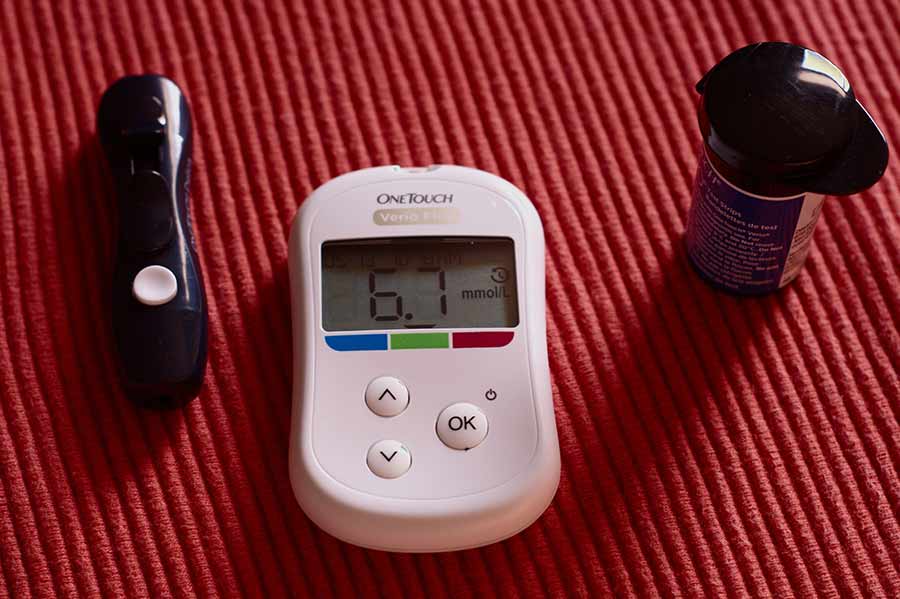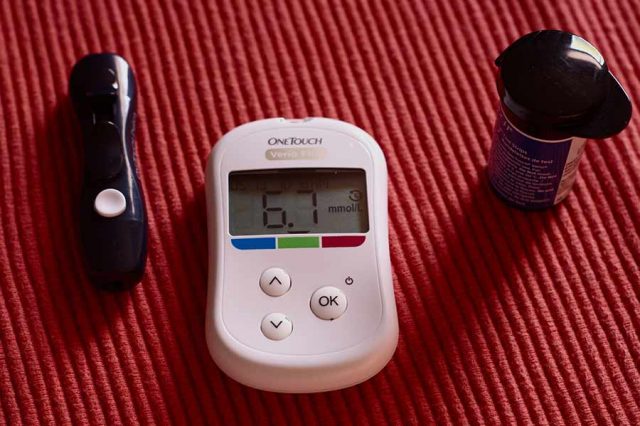
Diabetes has become of the most common chronic diseases in the US and globally. According to the CDC, over 100 million US adults are now living with diabetes or prediabetes. Diabetes occurs when blood sugar levels are very high. This increase in blood sugar levels is caused when your body doesnandrsquo;t produce adequate insulin or it is unable to utilize the insulin that is produced. Insulin is a hormone secreted by the pancreas which allows glucose to enter the bodyandrsquo;s cells. If your body doesnandrsquo;t respond correctly to insulin, glucose cannot enter your cells and remains in your blood, which results in high blood sugar levels. There are several types of diabetes but 90 to 95 % of all diabetes cases are type 2 diabetes which is also known as type 2 diabetes mellitus. It is important to understand the physiological and behavioral risk factors of type 2 diabetes in order to prevent and manage this disease.
Physiological Risk Factors of Type 2 Diabetes
Age
Age is one of the most significant physiological factors of diabetes as it typically occurs in adults after the age of 45. The risk of type 2 diabetes begins to rise significantly after the age of 45 and then rises considerably more after the age of 65. This increase in diabetes risk is probably because people tend to exercise less as they age and are more likely to gain weight even though they lose muscle mass. Earlier, type 2 diabetes was known as adult-onset diabetes but in recent years, young adults and even children have been diagnosed with this type of diabetes.
Body Weight
Experts estimate that obesity and overweight accounts for 65andndash;80% of new cases of type 2 diabetes. Studies show that the higher an individualandrsquo;s BMI (body mass index), the greater their risk of developing diabetes. If an individual is predisposed to diabetes and gains weight, the cells in his body become less sensitive to insulin. Furthermore, research indicates that fat cells are more resistant to insulin as compared to muscle cells. If you are obese, reducing your body weight by 5-10% can reduce your risk of developing diabetes by 58%.
Blood Pressure
Studies show that people with high blood pressure have a 50-70% risk of developing type 2 diabetes. Current research indicates that this increased risk could be caused by processes in the body such as inflammation that are triggered by high blood pressure. People who have high blood pressure and diabetes are more likely to develop heart disease at a younger age.
Cholesterol Levels
According to researchers, a low level of HDL (good) cholesterol or a high level of triglycerides is one of the risk factors for developing type 2 diabetes. High triglycerides donandrsquo;t cause diabetes but rather they function as an indicator that the system for converting food into energy is not functioning correctly.
In addition to these risk factors, if you have a family history of diabetes or if you have a history of PCOS, gestational diabetes, heart disease or stroke, you are at a higher risk of developing type 2 diabetes.
Behavioral Risk Factors of Type 2 Diabetes
Sedentary Lifestyle
People who are not physically active are more likely to develop type 2 diabetes as compared to those who exercise at least 3 times a week. Regular exercise can help to prevent and even manage diabetes. Diabetics who exercise regularly reduce the severity of their insulin-resistance as their muscles use the excess sugar in their blood as fuel for their workouts. This means that the sugar is no longer diverted to excess fat cells and their bodies are not forced to secrete more insulin.
High-fat and Carbohydrate Diet
An unhealthy diet is one of the main risk factors for developing type 2 diabetes. Studies show that there is a strong association between diabetes and a high intake of simple carbs and unhealthy fats. Researchers found a particularly strong link between diabetes and the consumption of carbonated drinks. Dietary changes such as switching from refined grains to whole grains, avoiding sugary drinks and choosing fish over red meat can help to reduce the risk of diabetes.
High Alcohol Intake
Heavy drinking can cause chronic pancreatitis which can lead to type 2 diabetes. Furthermore, heavy drinking also reduces the bodyandrsquo;s sensitivity to insulin which can trigger diabetes. Most alcoholic drinks are also high in calories which increases the risk of weight gain and obesity. This in turn increases the risk of developing type 2 diabetes. Simple steps such as not keeping alcohol at home and avoiding alcohol for at least 2 days each week can help to significantly reduce alcohol intake.
Diabetes treatment plans are individualized in order to provide patients with the best methods to manage their diabetes. Regular blood tests such as the A1C test helps to ascertain how well your diabetes management plan is working. There are also several ways to lower your A1C levels in order to stabilize your blood sugar levels. You can also invest in blood glucose monitoring kits for diabetics that will allow you to detect and track your blood sugar levels as often as required.
Did you find this article helpful? Join us at HealingWell for support and information about Diabetes. Connect and share with others like you.
Anita Fernandes has been writing extensively on health and wellness for over a decade. She has expertise in nutrition, fitness, public health, and weight loss and has contributed content to a variety of leading digital health publishers. Anita has a unique perspective on healthy living and lifestyle, as she has battled and overcome eating disorders and obesity. She shares her experiences in an effort to help others overcome the physical and mental health problems that can sometimes seem insurmountable.




